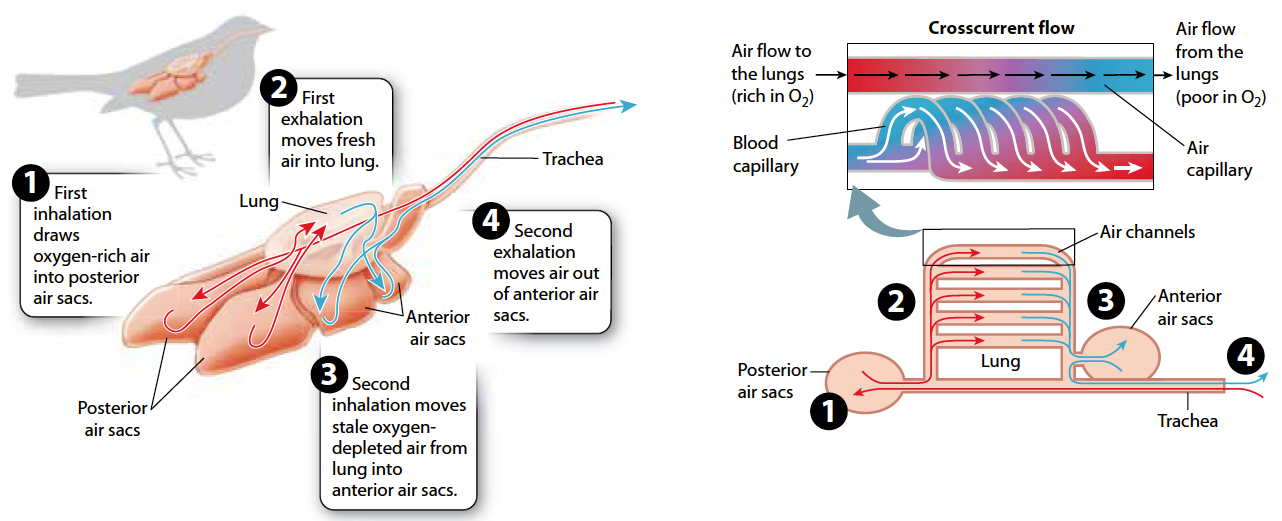The structure of bird lungs allows unidirectional airflow for increased oxygen uptake.
Birds extract O2 efficiently to supply the considerable energy needed for flight. An efficient O2 supply is particularly important for migratory birds that fly at high altitude where the air’s partial pressure of O2 is relatively low. The lungs of birds are unique in that they are rigid and do not inflate and deflate. As a consequence, birds do not use tidal breathing. Instead, they benefit from unidirectional airflow that enhances gas exchange by maintaining larger concentration gradients for diffusion.
A bird’s respiratory system consists of two sets of air sacs: one located posterior to the lungs (behind them) and one located anterior to the lungs (in front of them). Air is pumped through these air sacs continuously in a bellows-

After losing O2 and gaining CO2, the air leaves the lungs and enters the set of anterior air sacs. Fresh air is again inhaled into the posterior air sacs, and then the stale air in the anterior air sacs is exhaled out of the bird’s trachea and mouth. As a result, birds achieve a continuous supply of fresh air into the lung during both inhalation and exhalation. In contrast to other air-